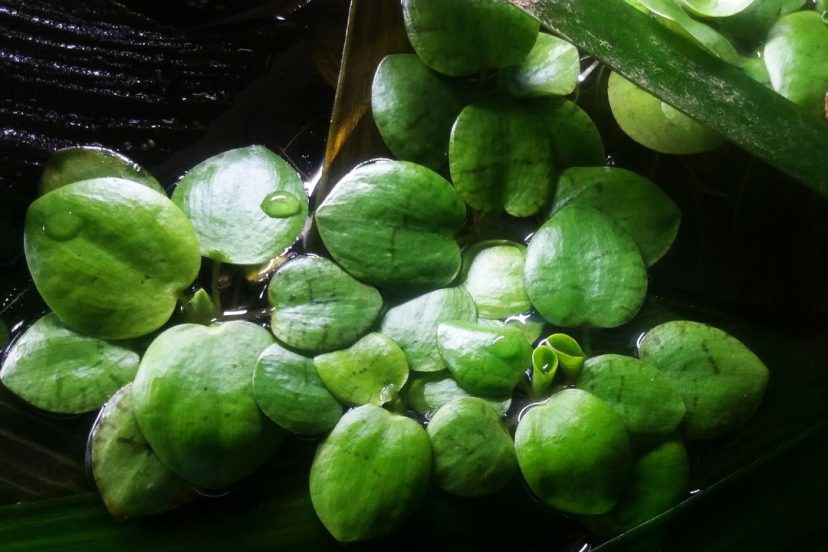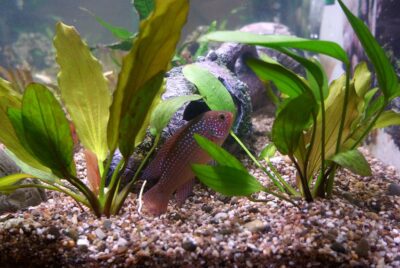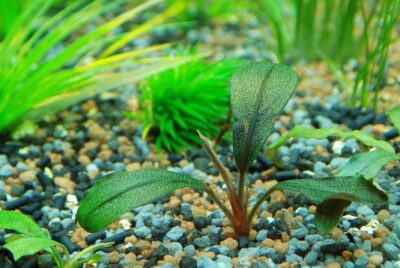Floating Aquarium Plants
As an avid fish enthusiast and experienced advisor, I cannot stress enough the importance of incorporating floating aquarium plants into your aquatic haven. These green wonders not only add a touch of natural beauty to your fish tank but also provide numerous benefits that contribute to the overall health and well-being of your aquatic ecosystem. In this article,
I will guide you through the world of floating aquarium plants, shedding light on their benefits, popular varieties, choosing the right plants for your tank, proper placement and maintenance, tips for successful growth, troubleshooting, and ways to enhance the aesthetic appeal of your aquarium.
Introduction: The Importance of Floating Aquarium Plants
When it comes to creating a thriving fish tank, floating aquarium plants play a vital role. These plants have the unique ability to grow on the water’s surface, creating a lush green canopy that not only captivates the eye but also serves a functional purpose. By understanding the benefits of incorporating floating plants into your aquarium, you can create a harmonious environment that promotes the well-being of your fish and plants alike.
Benefits of Floating Aquarium Plants
Oxygenation of the Water
One of the primary advantages of having floating aquarium plants is their role in oxygenating the water. Through a process known as photosynthesis, these plants absorb carbon dioxide and release oxygen, helping to maintain optimal oxygen levels for your fish. This is particularly important in densely stocked tanks or tanks with larger fish that have high oxygen demands.
Nutrient Absorption and Filtration
Floating plants are excellent at absorbing excess nutrients in the water, such as nitrates and phosphates. By doing so, they act as natural filters, reducing the risk of algae blooms and maintaining water clarity. This nutrient absorption not only benefits the plants themselves but also prevents nutrient imbalances that can be detrimental to the overall health of your aquarium.
Shade and Protection for Fish
Floating aquarium plants create a shaded area in your tank, providing refuge for fish that prefer dimly lit environments. This is especially beneficial for species that are prone to stress or require protection from aggressive tankmates. The shade also helps to reduce the intensity of light, preventing the growth of nuisance algae and maintaining a healthy balance within your ecosystem.
Algae Control
Floating plants outcompete algae for nutrients, effectively reducing the chances of algae overgrowth. By covering the water’s surface, they limit the amount of light available for algae to thrive, helping to keep your tank free from unsightly green invaders. Incorporating floating plants is a natural and eco-friendly way to control algae growth without the need for harsh chemicals.
Popular Types of Floating Aquarium Plants
When it comes to popular types of floating aquarium plants, there are several options available that can add beauty and functionality to your tank. These plants have unique characteristics and growth habits, making them interesting additions to any aquatic ecosystem. Here are some popular choices:
1. Water Lettuce (Pistia stratiotes)
- Light green in color, water lettuce features rosette-shaped leaves that float on the water’s surface.
- It grows well in both bright and shaded areas of the tank, providing excellent shade for fish.
- Water lettuce also acts as a natural filter, absorbing excess nutrients and helping to maintain water clarity.
2. Amazon Frogbit (Limnobium laevigatum)
- Amazon frogbit is known for its round, lily pad-like leaves and delicate white flowers.
- It thrives in tanks with strong lighting and has a rapid growth rate.
- This plant provides ample shade and cover for fish, making it a popular choice for creating a natural and serene habitat.
3. Duckweed (Lemna minor)
- Duckweed is one of the most common and fast-growing floating plants.
- It has tiny, vibrant green leaves that create a dense mat on the water’s surface.
- Duckweed is an excellent nutrient absorber, helping to reduce the presence of nitrates and phosphates in the water.
4. Salvinia (Salvinia natans)
- Salvinia is a versatile floating plant with small, ovate leaves.
- It forms a dense mat on the water’s surface, providing shelter for small fish and fry.
- Salvinia is highly efficient at absorbing excess nutrients and can help prevent algae growth in the tank.
5. Red Root Floater (Phyllanthus fluitans)
- Red root floater is a visually striking floating plant with reddish roots and bright green leaves.
- It adds a pop of color to your tank and creates a beautiful contrast with other plants.
- Red root floater also helps to shade the tank and control algae growth.
Choosing the Right Floating Aquarium Plants for Your Tank
When selecting floating aquarium plants for your tank, it’s important to consider a few key factors to ensure their successful growth and compatibility with your existing ecosystem.
Tank Size and Lighting Requirements
Different floating plants have varying space requirements and lighting preferences. Consider the size of your tank and the intensity of your lighting system to ensure that the plants you choose will thrive in their new environment.
Compatibility with Other Fish and Plants
While floating plants generally coexist peacefully with other fish and plant species, it’s essential to consider compatibility. Some fish may nibble on the roots or leaves of certain plants, while others may prefer open swimming areas. Additionally, ensure that the floating plants you choose do not shade or impede the growth of other light-dependent plants in your tank.
Growth Rate and Maintenance
The growth rate of floating plants can vary significantly. Some species, such as Duckweed, reproduce rapidly and require regular thinning to prevent excessive coverage. Consider the amount of time and effort you’re willing to dedicate to maintenance, as well as your desired aesthetic and functional goals for your aquarium.
Proper Placement and Maintenance of Floating Aquarium Plants
Proper placement and maintenance of floating aquarium plants are crucial for their health and optimal growth. By following these guidelines, you can ensure that your floating plants thrive and contribute to a vibrant and balanced ecosystem in your aquarium:
- Choose the Right Placement: When introducing floating aquarium plants to your tank, consider their lighting requirements. Some plants prefer bright, direct light, while others thrive in more shaded areas. Place the plants accordingly to provide them with the ideal lighting conditions.
- Maintain Water Circulation: Adequate water circulation is essential for the health of floating plants. Ensure that the water surface is gently agitated to prevent stagnant areas. This can be achieved through the use of aquarium filters, air stones, or circulation pumps.
- Prevent Excessive Coverage: As floating plants grow, they may cover a large portion of the water’s surface. To prevent excessive coverage, regularly thin out the plants by removing excess growth. This ensures that the plants do not block light from reaching other submerged plants or impede gas exchange.
- Monitor Nutrient Levels: Floating plants absorb nutrients directly from the water column. Regularly test the water parameters, including nitrate and phosphate levels, to ensure a balanced nutrient supply. If necessary, supplement the water with liquid fertilizers or root tabs specifically formulated for aquatic plants.
Note: It’s important to remember that the guidelines provided here are general recommendations. Different species of floating plants may have specific care requirements. Always research the specific needs of the plants you choose to ensure their optimal care and growth in your aquarium.
Tips for Successful Growth of Floating Aquarium Plants
While floating plants are generally easy to grow and maintain, implementing a few key strategies can help you achieve optimal growth and visual appeal.
Water Quality and Temperature
Floating plants thrive in tanks with good water quality. Regular water changes, proper filtration, and a well-established nitrogen cycle are crucial for their health. Additionally, maintaining the appropriate water temperature for your fish and plants will ensure their overall well-being.
Light Intensity and Duration
Proper lighting is essential for the growth of floating aquarium plants. Different species have varying light requirements, so it’s important to provide the appropriate intensity and duration. LED lights or full-spectrum fluorescent tubes are popular options for illuminating your aquarium.
CO2 Injection (Optional)
While not necessary for the growth of floating plants, injecting CO2 into your tank can enhance their overall health and growth rate. However, this is an optional step and should be carefully monitored to avoid imbalances or harm to your fish.
Common Challenges and Troubleshooting
Despite their many benefits, floating aquarium plants can sometimes pose challenges that require attention and troubleshooting. Here are some common issues you may encounter:
Overgrowth and Excessive Coverage
If left unchecked, some floating plants, such as Duckweed, can rapidly cover the entire surface of your tank, blocking light and impeding gas exchange. Regular thinning and removal are necessary to prevent overgrowth and ensure a balanced ecosystem.
Pests and Disease Control
Occasionally, floating plants may attract pests or suffer from diseases. Snails, in particular, can quickly multiply and become a nuisance. Regularly inspect your plants for signs of infestation or disease, and take appropriate measures to address the issue promptly.
Dealing with Floating Plants in Outdoor Ponds
If you have an outdoor pond with floating plants, it’s essential to manage their growth effectively. Harsh sunlight, wind, and extreme temperatures can impact the health and coverage of your plants. Regular monitoring, thinning, and protection from extreme conditions will help maintain a thriving ecosystem.
Enhancing the Aesthetic Appeal with Floating Plants
Floating aquarium plants offer an excellent opportunity to enhance the visual appeal of your tank and create captivating aquascapes. Here are a few suggestions to get you started:
Creating Natural Aquascapes
By strategically arranging floating plants, driftwood, rocks, and other decorations, you can create stunning natural aquascapes that mimic the beauty of underwater landscapes. Experiment with different layouts and elements to achieve a harmonious and visually pleasing result.
Mixing Floating Plants with Other Plant Varieties
Combining floating plants with other varieties, such as foreground, midground, and background plants, can add depth and dimension to your tank. Play with different colors, textures, and leaf shapes to create an eye-catching display.
Conclusion
Incorporating floating aquarium plants into your fish tank is a decision you won’t regret. Beyond their aesthetic appeal, these plants provide a range of benefits, from oxygenating the water and filtering out excess nutrients to providing shade and shelter for your fish. By following the guidelines outlined in this article, you can choose the right floating plants for your tank, ensure their proper placement and maintenance, and create a thriving aquatic ecosystem that promotes the health and happiness of your fish.
FAQs (Frequently Asked Questions)
Q. Can I keep floating plants with other live plants in my aquarium?
Yes, floating plants can coexist harmoniously with other live plants in your aquarium. They provide shade and help control algae growth, benefiting the overall health of the tank.
Q. Are floating plants suitable for all types of fish?
A. Most fish species appreciate the presence of floating plants, as they provide shelter, shade, and security. However, some fish may nibble on the roots or leaves of certain plants, so it’s essential to observe your fish’s behavior and ensure compatibility.
Q. How often should I trim my floating plants?
A. The frequency of trimming depends on the growth rate of the specific plants you have. As a general guideline, regular pruning every few weeks will help maintain the desired coverage and prevent overgrowth.
Q. Do floating plants require additional fertilizers?
A. Floating plants derive nutrients directly from the water column, but occasional supplementation with liquid fertilizers or root tabs can promote healthy growth, especially in tanks with limited nutrient availability.
Q. Can I use floating plants in an outdoor pond?
A. Yes, floating plants can thrive in outdoor ponds. However, they may require additional maintenance and protection from extreme weather conditions, such as strong sunlight and cold temperatures. Regular thinning and monitoring are necessary to maintain a balanced ecosystem.
Remember, when it comes to floating aquarium plants, experimentation and observation are key. Enjoy the process of creating a beautiful and healthy aquatic environment, and let the floating plants transform your fish tank into a mesmerizing underwater oasis.




